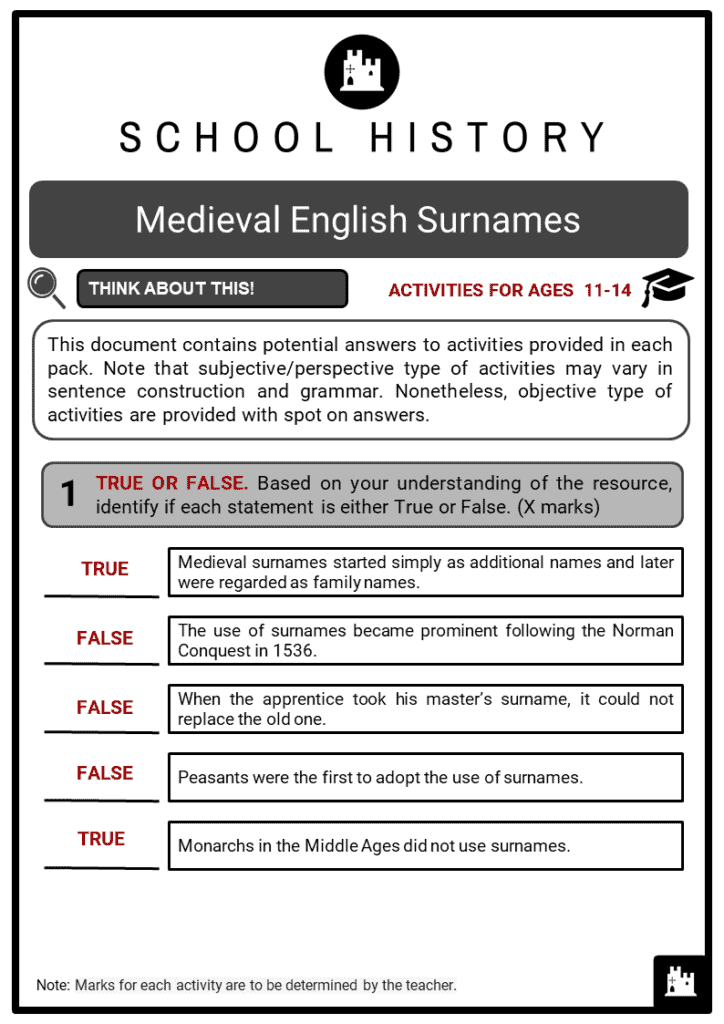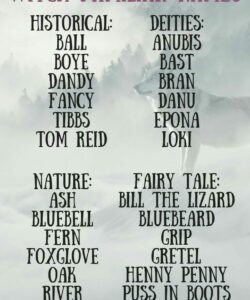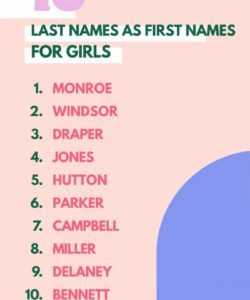Ever wondered about the origins of your own family name, or perhaps the names you encounter in historical novels and movies? Stepping back into the fascinating world of the Middle Ages, roughly from the 5th to the 15th century, reveals a treasure trove of naming conventions that tell stories of everyday life, geography, and personal traits. Unlike modern times where surnames are a given, their widespread adoption was a gradual process born out of necessity, driven by growing populations and the need for clearer identification.
Imagine a small medieval village where everyone is named John. How would you distinguish between John the baker, John who lives by the river, and John, the son of Thomas? As communities expanded and people moved more freely, simply using a given name became increasingly impractical. This practical problem spurred the development of what we now call last names, or surnames, providing a much-needed identifier beyond a person’s first name, helping to differentiate individuals in a bustling world.
These early last names weren’t just random labels; they were deeply rooted in a person’s immediate environment, their occupation, their family lineage, or even a distinctive physical characteristic. They offer a unique window into the social structures, daily activities, and even the landscape of medieval Europe. Exploring the last names of the Middle Ages is like sifting through historical documents, each one revealing a snippet of a bygone era and connecting us to our ancestors in a deeply personal way.
Unearthing Last Names From The Middle Ages
- Patronymic Surnames
- Occupational Surnames
- Toponymic or Locational Surnames
- Descriptive Surnames
- Status or Rank Surnames
- Religious Surnames
- Foreign Origin Surnames
- Wildlife or Plant Surnames
- Feudal or Land Tenure Surnames
- Bynames and Additional Identifiers
One of the most common ways last names of the Middle Ages came into being was through patronymics, which literally means “father’s name.” This system identified individuals by referencing their father, establishing a clear lineage within a community. It was a straightforward and highly effective method for distinguishing between people with the same given name.
Examples abound across various cultures: “Johnson” (son of John), “MacDonald” (son of Donald), “O’Connell” (descendant of Conall), and “Peterson” (son of Peter). These names served as a direct link to the male head of the household, a reflection of the patriarchal societies prevalent during that era, and continue to be incredibly widespread today.

Another prolific source of medieval last names derived directly from a person’s profession or trade. In a time when communities relied heavily on skilled craftsmen and specific service providers, an individual’s occupation was often their most prominent identifier. It was natural for “John the Baker” to eventually become simply John Baker.
Consider names like “Smith” (a blacksmith, one who ‘smote’ or struck metal), “Miller” (one who operated a mill), “Cooper” (a barrel maker), “Carpenter” (a woodworker), or “Taylor” (a tailor, one who cut cloth). These names vividly paint a picture of the essential roles people played in their communities and how their livelihoods shaped their identities.
Many medieval last names emerged from where a person lived, originated, or owned land. This category, known as toponymic or locational surnames, became increasingly important as people moved from one place to another or when specific geographical features defined a person’s residence. It offered a practical way to specify “which John” by adding where he was from.
Names such as “Hill” (lived by a hill), “Rivers” (lived by rivers), “Brooks” (lived near a brook), “Atwood” (lived by a wood), or “Churchill” (lived by a church on a hill) are perfect examples. Even names like “London” or “Paris” indicate an ancestor’s connection to a particular city or town, providing a geographical footprint of their past.
Sometimes, a person’s most striking physical characteristic or a dominant personality trait became their distinguishing mark. These descriptive surnames were essentially nicknames that stuck, evolving into hereditary last names over generations. They offer a glimpse into how people perceived each other in the Middle Ages.
We see this in names like “Short” or “Long” (referring to height), “White” or “Brown” (referring to hair or complexion), “Armstrong” (strong arm), “Goodman” (a virtuous person), or “Moody” (a person of varying temperament). These names are often quite literal and provide a direct, sometimes humorous, insight into an ancestor’s appearance or character.
Less common but still present are surnames derived from a person’s social status, rank, or an official title they held. While not everyone with a name like “King” was actual royalty, it often indicated someone who played a royal role in a local play, worked for a king, or perhaps had a regal demeanor that earned them the moniker.
Examples include “King,” “Prince,” “Knight,” “Lord,” and even “Steward” (an estate manager). These names might not always signify literal status, but they certainly hint at a connection to authority, service, or a prominent position within a community, reflecting the hierarchical nature of medieval society.
Given the pervasive influence of the Church in medieval life, it’s not surprising that some last names sprang from religious connections. These could be derived from saint’s names, roles within the Church, or even pilgrimage experiences, highlighting the deep spiritual fabric of the era.
“Clarke” (a cleric or scholar, usually associated with the church), “Bishop,” “Prior,” or “Abbott” are names that directly relate to ecclesiastical roles. Other names might indirectly reference religious figures, such as “Michael” or “Martin,” which are derived from popular saints and became given names that later evolved into surnames.
As trade and migrations occurred even in the Middle Ages, some surnames indicated a person’s origin from a different region or country. This was particularly true in areas with bustling ports or where different cultures intermingled, leading to names that highlighted a “foreigner” within the local populace.
Names like “French,” “English,” “Scott,” or “Fleming” (from Flanders) clearly point to an ancestor’s national or regional background. These surnames serve as fascinating markers of historical migration patterns and the movement of people across medieval Europe, often settling in new lands and carrying their identity with them.
While less common as a direct origin compared to occupations or locations, some medieval last names were inspired by animals, plants, or elements of the natural world. These could be nicknames given due to a person’s resemblance to an animal, their association with a particular plant, or even their coat of arms.
Consider names like “Fox” (perhaps a cunning individual), “Lyon” (a brave or strong person), “Bird,” or “Rose.” These names add a poetic and often symbolic layer to our understanding of medieval naming practices, linking human identity with the vibrant natural environment.
In a society heavily structured by feudalism, land ownership and tenure were incredibly significant. Some last names reflect this, indicating a person’s connection to a specific type of landholding or their role within the feudal system, particularly among the nobility or land-owning classes.
Names such as “Forester” (one who managed a forest), “Parker” (a keeper of a park or hunting ground), or even names derived from specific manors or estates fall into this category. These provide a glimpse into the complex legal and social relationships tied to land in the Middle Ages.
Before surnames became truly hereditary and fixed, many people used “bynames” or additional descriptive words to differentiate themselves. These weren’t necessarily passed down through generations but were fluid identifiers, often serving as precursors to later, more permanent last names.
These bynames could be anything from “John son of Robert” to “Richard at the Bridge” or “William the Red.” They highlight the transitional phase when societies were moving from single given names to the structured surname system we recognize today, showcasing the organic evolution of personal identification.
The journey through the last names of the Middle Ages is a captivating exploration into the very fabric of historical communities. Each surname, whether it tells a story of an ancestor’s craft, their dwelling place, their physical appearance, or their lineage, serves as a direct link to a time long past. These names are not just labels; they are enduring echoes of everyday lives, providing invaluable insights into the social, economic, and cultural landscapes of medieval Europe.
Understanding the origins of these historical identifiers deepens our appreciation for the rich tapestry of human history and migration. They remind us that behind every name is a story, a person, and a connection to a world that, though distant, continues to influence our present. The legacy of these ancient naming conventions truly endures, woven into the very identity of millions across the globe today.



